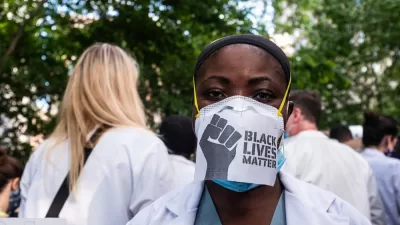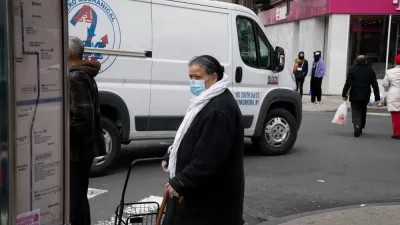The worsening housing crisis shows that we must develop comprehensive tools and programs to keep families housed and their assets preserved.

We must confront the connection between homeownership and inequality, and the centuries of systemic racism that have enabled it. The pandemic has put a spotlight on the connection between health and stable housing. The disparate impact of COVID-19 on Black and Latino families, who are more vulnerable to job and income disruptions, will result in waves of evictions and foreclosures. (This report paints a grim picture—it estimates that up to 22 million renters and 15 million homeowners are at risk.) The protests against police violence and discriminatory enforcement have mainstreamed an understanding that unequal treatment under the law has persisted. Much of that unequal treatment has been carried out through our housing policy and practice. Well-known is redlining, the practice in which, starting in the 1930s, the federal Home Owners’ Loan Corporation (HOLC) graded communities so that some were eligible for lower-cost, federally insured mortgages. Borrowers in other communities were excluded. The HOLC described entire communities in my hometown of Stamford, Connecticut, as “now given over to the city’s undesirable element.” In case there was any confusion, the official form included the percentage of residents who were “foreign-born” or “Negro,” and whether these percentages amounted to an “infiltration.” These practices poisoned the housing market, and their impacts remain with us today, in our community planning and in our political discourse.
Traditional redlining is just the best known of our intentional policies that discriminated against families of color; steering, predatory inclusion, exclusionary zoning, and appraisal and insurance redlining, among others, have also played a part. Those policies (and their legacies) aggravated and enforced segregation, tamped down home appreciation, and limited intergenerational transfers of wealth between Black families. Because of these policies, the homeownership gap between Black and white households remains where it was when Lyndon Johnson signed the Fair Housing Act in 1968. Today, 73 percent of white families are homeowners; just 44 percent of Black families own their homes.
Most Americans would reject ...
FULL STORY: This Moment Calls for Finally Making Homeownership Access Fair

Alabama: Trump Terminates Settlements for Black Communities Harmed By Raw Sewage
Trump deemed the landmark civil rights agreement “illegal DEI and environmental justice policy.”

Planetizen Federal Action Tracker
A weekly monitor of how Trump’s orders and actions are impacting planners and planning in America.

Why Should We Subsidize Public Transportation?
Many public transit agencies face financial stress due to rising costs, declining fare revenue, and declining subsidies. Transit advocates must provide a strong business case for increasing public transit funding.

Understanding Road Diets
An explainer from Momentum highlights the advantages of reducing vehicle lanes in favor of more bike, transit, and pedestrian infrastructure.

New California Law Regulates Warehouse Pollution
A new law tightens building and emissions regulations for large distribution warehouses to mitigate air pollution and traffic in surrounding communities.

Phoenix Announces Opening Date for Light Rail Extension
The South Central extension will connect South Phoenix to downtown and other major hubs starting on June 7.
Urban Design for Planners 1: Software Tools
This six-course series explores essential urban design concepts using open source software and equips planners with the tools they need to participate fully in the urban design process.
Planning for Universal Design
Learn the tools for implementing Universal Design in planning regulations.
Caltrans
Smith Gee Studio
Institute for Housing and Urban Development Studies (IHS)
City of Grandview
Harvard GSD Executive Education
Toledo-Lucas County Plan Commissions
Salt Lake City
NYU Wagner Graduate School of Public Service





























